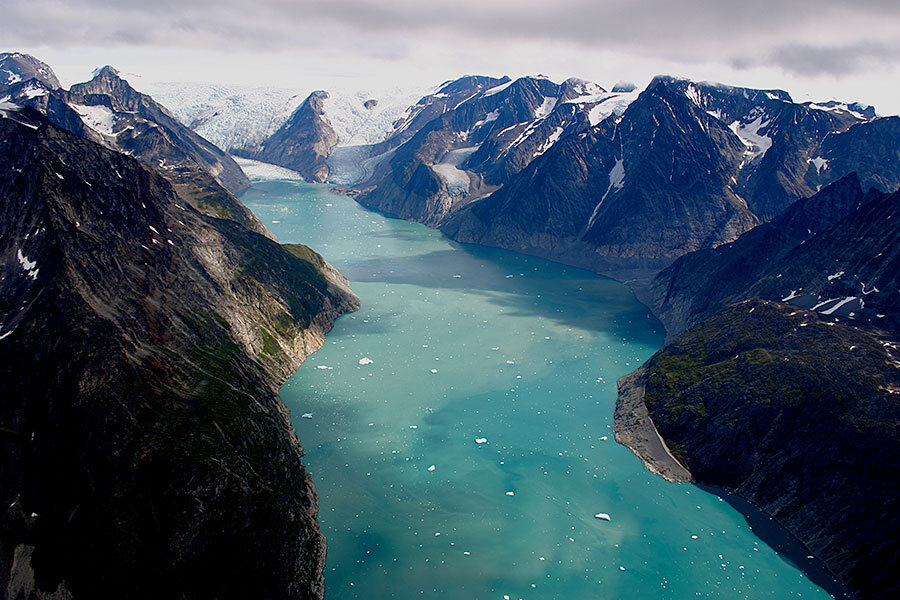Global warming is changing our planet's axis, say scientists
Loading...
The Earth’s axis is shifting, and scientists now think they have deeper insight into the causes.
While previous work has considered the impact of Greenland’s melting ice sheet, this latest study, published Friday in the journal Science Advances, also considers Antarctica’s ice sheet and changes in global hydrology.
One of the most important implications of this work is in testing climate change models, looking back at decades of data to see whether dramatic changes such as the loss of Greenland’s ice sheet are likely to be natural phenomena or human-induced.
"Study of Earth’s rotation is one of the oldest scientific endeavors known to mankind," says the project’s principal investigator Erik Ivins of California Institute of Techology's Jet Propulsion Laboratory, in a telephone interview with The Christian Science Monitor.
"By about 1899, it became obvious that this analysis could be done extremely accurately by observation of the stars in specific locations."
When ships first began circling the globe, studying the stars took on new meaning, helping sailors navigate the seas. More recently, as we launch satellites into space and seek to track their progress to monitor other planets, the rotation of our own takes on an even keener sense of importance.
As astronomers tracked the stars, and the decades accumulated mountains of data, certain wobbles of the Earth became apparent – the Chandler wobble, for example, which takes 433 days to move the north pole of the axis by 20 feet.
But other shifts in the rotational axis do not follow a regular pattern, some being linked instead to the loss of ice sheets.
The North rotational pole, for example, has moved toward Hudson Bay, Canada, during the 20th century. Scientists link this long-term motion to the collapse of the Laurentide ice sheet in North America and the subsequent mass deficit in the region.
"What became obvious after about 50 years of this data collection – and now we have over 100 years of data – is that we see there's a near decadal wobble, too," says Dr. Ivins.
"Both the decadal oscillation and the development of the uniform motion towards Labrador [Canada] has changed completely because of the tremendous amount of ice lost from Greenland, and also Antarctica."
Since the year 2000, there has been a dramatic 75-degree shift in direction of the polar drift, which most scientists have attributed solely to the loss of ice sheets in Greenland and Antarctica.
What this new work has shown is that while the melting ice is an important factor, it is not the only one: changes in the amount of water held in the continents also play a key role.
"One of the important things underlying this work is that we have a satellite system that’s been operating for 15 years that can detect any change of mass in the oceans, ice sheets and Earth's water in general," says Ivins, referring to NASA’s GRACE mission.
Using this new data, the scientists were also able to show that changes in terrestrial water storage may be intimately connected to the decadal swings in Earth's rotational axis.
The researchers hope that as they glean a deeper understanding of the connection between shifts in the Earth's axis and the processes taking place on the planet’s surface, they will be able to look back at the rich dataset collected since the earliest explorers first launched their sea-bound quests, and will be able to draw conclusions.
For example, is today's drastic shedding of Greenland’s ice sheet nothing more than a natural phenomenon, or does mankind bear responsibility? By considering past climates and shifts in the Earth’s spin axis, scientists hope to gain insight into whether huge discharges of water from glacial masses have occurred before.
"We can now view this dataset as a gold mine to test climate change models," says Ivins.






